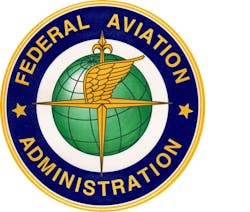FAA, Telecommunication Companies Reach Agreement to Continue 5G Deployment
The FAA, Verizon and AT&T have come to an agreement that allows aircraft access to key airports, while continuing the rollout of 5G service. The FAA made the announcement Friday.
“The FAA appreciates the strong communication and collaborative approach with wireless companies, which have provided more precise data about the exact location of wireless transmitters and supported more thorough analysis of how 5G C-band signals interact with sensitive aircraft instruments. The FAA used this data to determine that it is possible to safely and more precisely map the size and shape of the areas around airports where 5G signals are mitigated, shrinking the areas where wireless operators are deferring their antenna activations.
“This will enable the wireless providers to safely turn on more towers as they deploy new 5G service in major markets across the United States. The FAA continues to work with helicopter operators and others in the aviation community to ensure they can safely operate in areas of current and planned 5G deployment,” the FAA said.
Verizon and AT&T agreed to delay their originally planned start of 5G service from Dec. 5, 2021, to Jan. 5, 2022, after Airbus and Boeing raised concerns about the service’s interference with radio altimeters. The rollout was then postponed until Jan. 19 by a request from the Department of Transportation, along with the telecommunication companies agreeing to delay the rollout near some airports further.
Since then, 5G services have gone live, disrupting flight schedules and raising concerns from industry organizations.
Prior to Friday’s announcement the FAA cleared 20 altimeter models to operate in 5G zones. Those models include include:
- All Boeing 717, 737, 747, 757, 767, 777, 787
- MD-10/-11
- Airbus A300, A310, A319, A220, A320, A321, A330, A340, A350, A380
- Embraer 120, 170, and 190 regional jets
- All CL-600/CRJ regional jets
- DHC-8 turboprops
- ATR turboprops
The FAA said that approves 90 percent of the U.S. commercial fleet to perform low-visibility landings in the 5G C-Band deployment areas.
About the Author
Walker Jaroch
Editor
Contact: Walker Jaroch
Editor | AMT
+1-920-568-8399
>> To download the AviationPros media kits, visit: Marketing Resource Center
>>Check out our aviation magazines: Ground Support Worldwide | Airport Business | Aircraft Maintenance Technology

